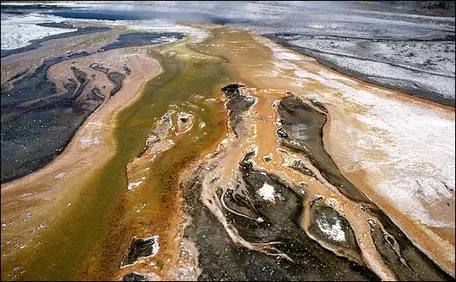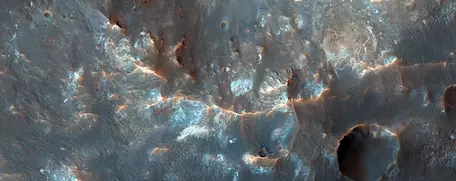The Color of Temperature
Homework 2_Extremophiles
Julia Kahmann-Robinson PhD and Marjorie Chan PhD, University of Utah Department of Geology & Geophysics
Purpose
Identify why an environment is considered "extreme" and draw inferences about life based upon the attributes/characteristics of these environments.
Extremophiles in hot water
Watch the following YouTube video created by GNC Science and answer the following questions: http://www.youtube.com/watch?v=VU-A6Sx7k-U
- Why is this environment extreme? List characteristics of the environment that would classify this environment as extreme.
- Given the list of characteristics you provided in #1, name the types of extremophiles that could exist there [refer to the list of extremophiles provided by your instructor].
- The colors of the hot spring have meaning. What do the colors represent? Which colors represent warmer water and conversely cooler water?
Yellowstone: An Earth Analog
The photograph (Figure 1), taken in Yellowstone National Park, is a hot spring with out flow channels (hydrothermal environment, similar to above). For Figure 1 draw a contour map of temperature.
- Determine how many colors you observe and assign a hypothetical temperature range to each color.
- Using your temperature ranges, come up with a contour interval of temperature (Ex: 1 contour line = 5 degrees Celsius) and make a contour map of the image underneath the photograph provided. You may use trace paper over the image to represent the changes you see in color.
Holden Crater, Mars
Holden Crater, a potential landing site for MSL Curiosity, is thought to have hydrothermal deposits similar to the Earth environments above. Figure 2 is an example of the terrain provided by HiRISE.
- What do you think the colors mean in the HiRISE image, is it the same?
- Using JMARS, capture one CRISM image that would infer a hydrothermal environment in the past below. Hints: (1) Review navigation in JMARS if necessary and investigate the crater walls/rims. (2) Think about what mineral assemblages would suggest a hydrothermal environment.


![[creative commons]](/images/creativecommons_16.png)
